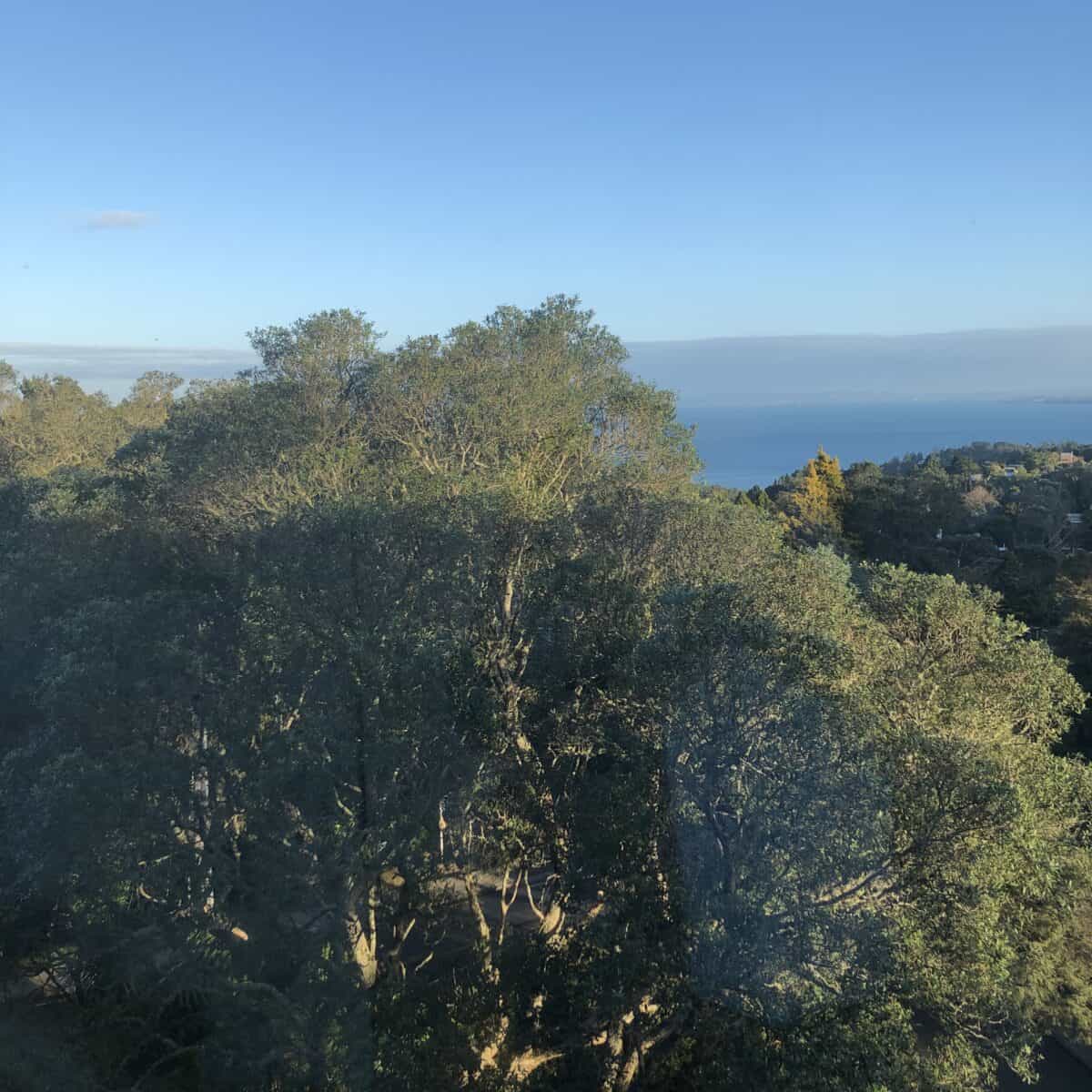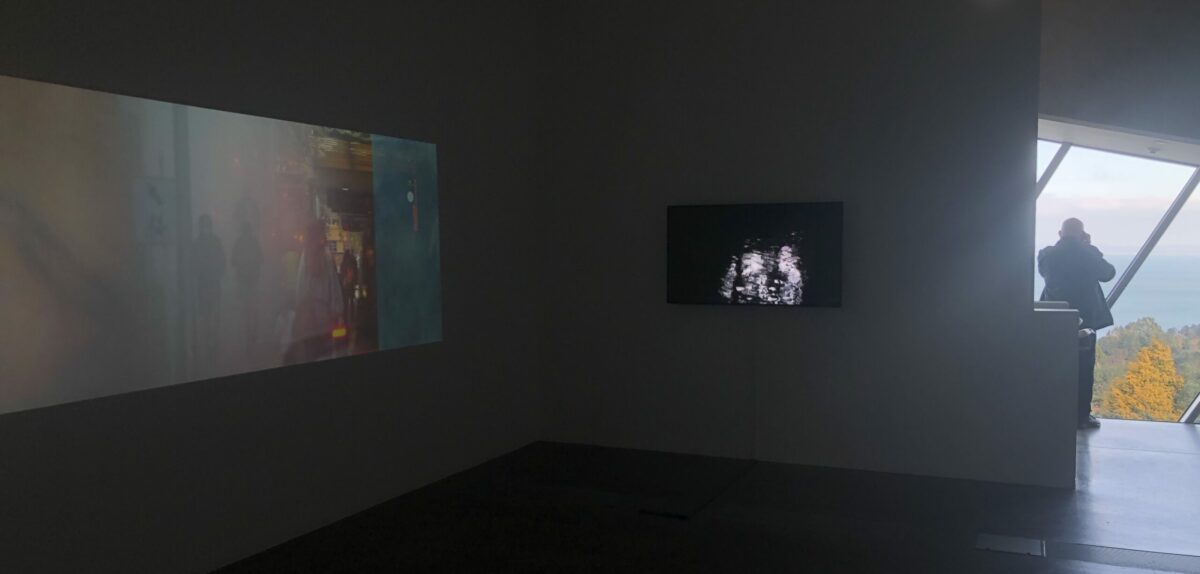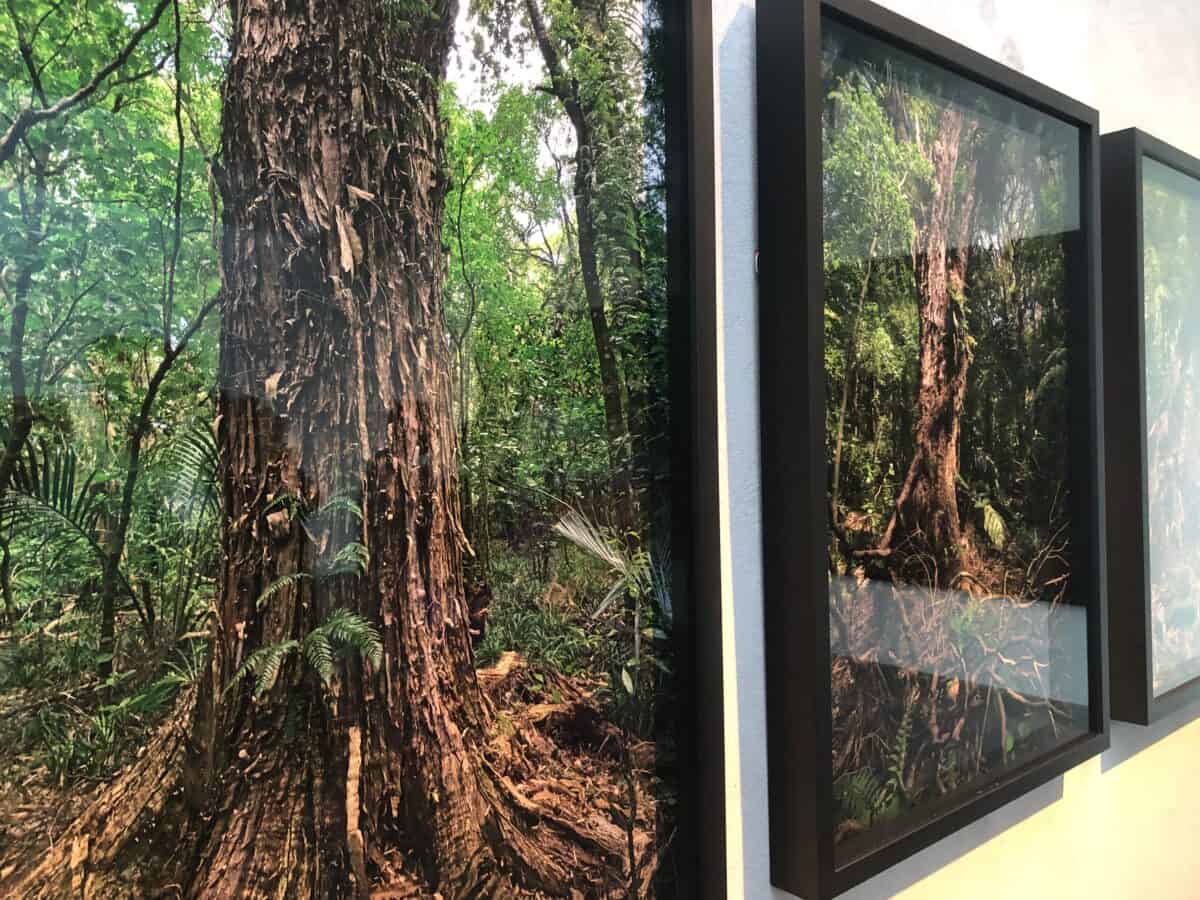There are two stairways at the Te Uru Waitākere Contemporary Gallery that wind up to the galleries that house the Ihirangaranga / Resonances of the Forest: Toi Taiao Whakatairanga exhibition. The front stairway is white and yellow. If you look down while you are climbing, you appear to be gazing into the eye of the gallery.
As intriguing as this staircase is, I was lucky that someone recommended taking the back stairs – I couldn’t have known how perfect a preface those stairs would make to viewing this particular exhibition, which is preoccupied by the health of our forests. The stairs rise up inside the building-length windows, past a pōhutukawa putting out its new blue-green growth. As I climbed above the pōhutukawa, I was met by a view of the Manukau Harbour and the surrounding Waitākere Ranges.

From the bright staircase, I entered the dark canopy of Gallery Four, which houses two videos playing adjacent each other. These pieces introduce the exhibition and provide an immediate signal that all is not right here in the ngahere. There are diseases, like kauri dieback (caused by Phytophthora agathidicida) and myrtle rust (caused by Austropuccinia psidii), which threaten our taonga. And those diseases are spreading.

One of the videos, Te Tukumate – The Pathogen by Dan Nathan, draws parallels between pathogen behaviour and human behaviour, implicating us in some way. I felt presented with a choice—fall for the environmentally degrading consumerism that is also spreading like disease or focus on kaitiakitanga and actively serve te taiao.

Stepping out of the closed canopy of Gallery Four, there is a clearing in the exhibition’s forest that provides a view of the mountains. Seven all-black panels grace the far wall of Gallery Five – the shimmering mountains and sea have been added using Piha’s glittering black sand. The forest that occupies the painting’s mountains are present in charcoal, which is actively being added to the canvas by the artist, Charlotte Graham, and by the public during scheduled engagements.
While these paintings are massive, they do not dominate or overwhelm the space. Instead, they preside, as mountains tend to do, over the other pieces in Gallery Five. Beside these mountains, two other videos play, one with a narrative accessed via headphones that explains the impact of pathogens on our forests. The next piece along are the pages showing the development of the graphic novel What shall we do about Myrtle? by Aroha Novak. Draped from the ceiling are cloth tapestries imprinted with Myrtaceae leaves by Angela Kilford. These are embroidered with myrtle rust pustules and a number of the agents that may help in fighting myrtle rust – tiny fungi and gall midge larvae.
At first, I missed the photographs in the gallery—I was so drawn by the dark mountains that I walked straight past Natalie Robertson’s photographs on the way in. I spent more time with these before leaving, admiring the ancient and absolutely huge kānuka trees. These became possibly my favourite piece, along with the photograph of a re-created fishing weir made using mānuka and kānuka stakes. There is a deep story to this set of photographs that is beautifully told here. It was an important reminder of the many things we take for granted that could one day be gone.

One of the most powerful things for me was how the exhibition as a whole was contextualized by its Waitākere surroundings. The views of the mountains, offered through the windows of both galleries, were an extension of the art itself. They demanded to be seen, the same way that the exhibition demanded that we see and acknowledge the pathogens that are impacting the forests.
This palpable connection between the art and its subject is one of the many strengths of Ihirangaranga / Resonances of the Forest. I sincerely hope you will take the time to see this exhibition. And if you do, ask for directions to the back stairs – it’s worth it.
Jenny Leonard
This exhibition was made possible by Toi Taiao Whakatairanga, a project within Mobilising for Action. There will be a curator talk 11th November 10.30am and two workshops with Angela Kilford on 11 November and 12 November at Te Uru Waitākere Contemporary Gallery.
